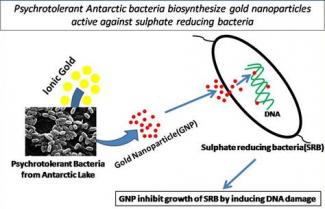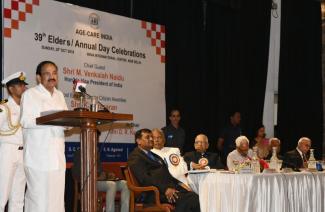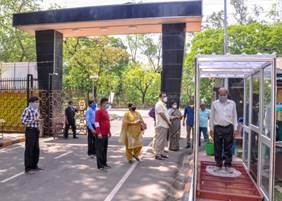
The National Centre for Polar and Ocean Research (NCPOR) and the Goa University (GU) have successfully synthesized gold nanoparticles (GNPs) using psychrotolerant Antarctic bacteria through a non-toxic, low-cost, and eco-friendly way. Through a study, NCPOR and GU have established that 20-30-nm-sized spherical-shaped GNPs could be synthesized in a controlled environment. These GNPs can be used as a composite therapeutic agent clinical trials, especially in anti-cancer, anti-viral, anti-diabetic, and cholesterol-lowering drugs.
The NCPOR-GU study revealed genotoxic effect of GNPs on a sulphate reducing bacteria (SRB). The GNPs displayed enough anti-bacterial properties by inhibiting the growth of SRB and its sulphide production by damaging the genetic information of the DNA of the bacterial cell. Genotoxicity describes the property of a chemical agent that is capable of damaging the genetic information of DNA and thus causing mutation of the cell, which can lead to cancer.
Nanoparticles (NPs) have wide variety of potential applications in the fields of biomedical, optical and electronics research. Metallic NPs have been efficiently exploited for biomedical applications and among them GNPs are found to be effective in biomedical research.
Now, what is nanotechnology and nanoparticle (NP)? Nanotechnology is a technology that creates new and novel materials through controlled manipulation at a size range of 1 nm (nanometer) to 100 nm (1 nm equals to 10-9 m). And NPs are those materials that are at least one dimension smaller than 100 nanometres. NPs have a high surface-to-volume ratio and they can provide tremendous driving force for diffusion, especially at elevated temperatures. Sintering, i.e., coalescing into solid or porous mass by means of heating without liquefaction, can occur at lower temperatures at shorter time scales than larger particles. GNPs are melted at much lower temperatures (300 °C) than bulk gold (1064 °C). NPs have been found to impart various desirable properties to different day-to-day products. For example, GNPs are found to have greater solar radiation absorbing ability than the conventional bulk gold, which makes them a better candidate for use in the photovoltaic cell manufacturing industry.
GNPs have unique optical properties too. For example, particles above 100 nm show blue or violet colour in water, while the colour becomes wine red in 100 nm gold colloidal particles. They can thus be used of therapeutic imaging. GNPs also have unique physicochemical properties. Their biocompatibility, high surface area, stability, and nontoxicity make them suitable for various applications in therapeutic use including detection and diagnosis of diseases, bio-labeling, and targeted drug delivery. As nano-carriers, GNPs are capable of transferring various drugs made out of peptides, proteins, plasmid DNAs, small interfering RNAs, and chemotherapeutic agents to target diseased cells of the human body.
GNPs are also found to be useful in the electronics industry. Scientists have constructed a transistor known as NOMFET (Nanoparticle Organic Memory Field-Effect Transistor) by embedding GNPs in a porous manganese oxide as a room temperature catalyst to break down volatile organic compound in air and combining GNPs with organic molecules. NOMFETs can mimic the feature of the human synapse known as plasticity, or the variation of the speed and strength of the signal going from neuron to neuron. These novel transistors can now facilitate better recreation of certain types of human cognitive processes, such as recognition and image processing and have their application in artificial intelligence.
NCPOR and GU have resorted to environmentally acceptable green chemistry procedures to reduce gold ion to GNPs using psychrotolerant Antarctic bacteria. Moreover, they did not have to use synthetic chemical additives as stabilizing or reducing agents. Use of psychrotolerant Antarctic bacteria is found to have special advantages like mild reaction condition to reduce gold ion to Gold Nanoparticles (GNPs) with a good dispersion capability.
Led by Dr. Kirti Ranjan Das of Environmental Impact Assessment Cell of NCPOR, the research team comprised Dr. Anoop Kumar Tiwari, Senior Scientist at NCPOR, and Prof. Savita Kerkar of the Dept. of Biotechnology, Goa University. Theirresearchpaper has been recently published in the Journal of Preparative Biochemistry & Biotechnology.











